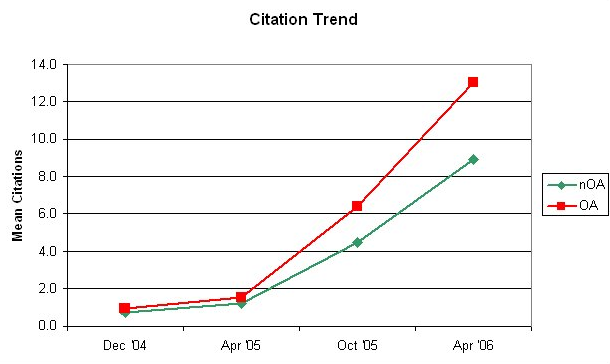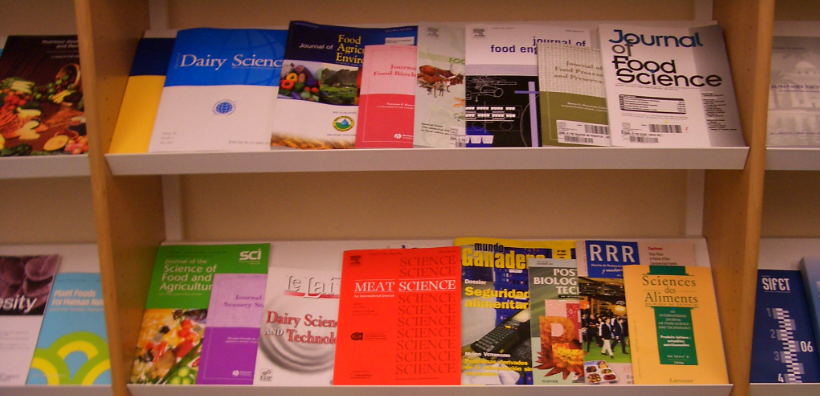
Future Of Open Access Educational Materials Is Ripe With Opportunity
By Christine Kern| The future of open access educational materials is ripe with opportunity as more higher-education faculty turn to them to help provide quality education at affordable costs, according to a recent Cengage white paper. These open access resources help improve the quality of course materials, boost student engagement, improve graduation rates, and lower overall educational costs. And, since one in five college students report they have skipped or deferred a particular course because of the price of the required learning resources, it means that OERs are a potentially game-changing trend in higher education.
The survey, Open Educational Resources (OER) and the Evolving Higher Education Landscape, was given to more than 500 faculty members and found open educational resources (OER) in higher education could grow to become the primary digital learning resource in the next five years, tripling from 4 to 12 percent. Further, the use of OER for supplemental learning materials is anticipated to nearly quadruple, from 5 to 19 percent.
The study also found more than three-quarters of faculty members not currently using OER said they expect to adopt or learn how to use the materials in the future. One former CEO of a non-profit technology company told Cengage, “The longer game with OER is really in the adaptive and customization capabilities to spur learning outcomes.” The report explains, “As new non-profit and for-profit organizations seek to carve out market niches, education and technology companies — with proven technology platforms suited to OER integration as well as expertise in content curation and quality content development — have an important role to play in adding value to the OER experience.”
STEM courses, such as computing and mathematics, yielded the highest use of the technology and associated supplemental materials, while English and psychology saw the lowest use numbers. OER is used for supplemental materials by 5 percent of total respondents, 18 percent in computing, 13 percent in mathematics, 8 percent in English, and 4 percent in psychology.
One reason for the escalation in OER use is an effort to keep educational costs down while providing quality materials to students. While 60 percent of users in the Cengage survey were highly satisfied with the OER materials they were using, obstacles to adoption still persist. These include difficulty in finding resources, concerns about unknown permissions and quality, and difficulty in integrating resources. The most significant barrier remains faculty perceptions regarding the time and effort required to locate and evaluate appropriate materials. The most often cited barriers were the lack of a comprehensive catalog (51.5 percent) and difficulty in finding what they needed (42 percent).
The future holds tremendous potential for OER providers, though the report cautions it must be done right. “If OER is to become truly mainstream,” it reads, “it will need to be integrated with personalized and adaptive learning technologies – including assessment and analytics — that help to improve student performance by mapping objectives to outcomes. Quality content can only go so far; it must be ‘wrapped’ in an instructionally designed framework that creates a cohesive and effective learning space.” Read more

Open access ‘boosts citations by a fifth’
By David Matthews| Open access papers attract up to a fifth more citations than those locked away in closed journals, a new study has found.
Jim Ottaviani, librarian at the University of Michigan, looked at what happened when his institution made papers available through its repository and found that “an open access citation advantage as high as 19 per cent exists”.
And better-cited papers gained more from being open access, found “The Post-Embargo Open Access Citation Advantage: It Exists (Probably), It’s Modest (Usually), and the Rich Get Richer (of Course)”, published in Plos One. “When an article benefits from being OA, it benefits a lot,” the paper concludes.
Previous studies that attempted to determine whether an open access citation advantage exists have been dogged by the difficulty of finding comparable samples of open-access and subscription-only articles.
For example, it could be that authors select only their best articles to be made public in an otherwise closed journal by paying an article processing charge, meaning they get more citations regardless of the publishing format.
The study got around this problem by looking at the citation rates of thousands of articles after they had been made public through Michigan’s repository over the past decade. This meant that Mr Ottaviani had a relatively random sample of nearly 4,000 open access papers across a range of otherwise subscription-only journals.
It looked at papers that had been made open access only in a university repository (so-called green open access). Although these articles are normally easy to find via search engines, had they been made open access through their journal (referred to as gold open access), they might have garnered even more citations, the paper points out.
Although the paper finds that a citation advantage exists, it is smaller than in some other studies that have looked at the same question, and found that open access boosts citations by up to 172 per cent.
SPARC Europe, an organisation made up of European university libraries and research institutes that campaigns for research openness, has collated 70 studies that looked at whether open access provides a citation advantage and found that 46 of them did.
That paper concludes by recommending a new study involving a greater mix of subjects (Mr Ottaviani’s paper looked mainly at physical science, health science and engineering articles) and more than one university, which it says would produce even more robust results. Read more

Open Access Academic Journals Gaining Broad Readership
By Henderson| The publishing industry has been witnessing several technical and strategic changes over the years and Open Access publishing is one of the popular publication models that has received wider acknowledgement from the scientific community.
Open access publishing is producing 2 million articles annually and increasing global employment in the publishing industry. The present observed annual growth of article publishing through the Open Access model is at a rate of 7.5% to 10% every year.
With its 700+ open access journals and 3000+ International Conferences across the globe, OMICS Group is all set to provide open scientific information platforms, facilitating scientific knowledge sharing through the networked communities across the globe. As of now OMICS Group is getting 30+ million readers to its journals and conferences.
Open Access publication is gaining popularity due to increased online connectivity as it could reach millions of readers within no time, facilitating archiving, indexing, data mining, retrieving, and rapid distribution of research information. Hence, quick dissemination of valuable scientific innovations and knowledge transfer is taking place across the globe.
The number of researchers and authors trusting the Open Access publishing system is on the rise steadily by 5% each year and as many as 10 million authors are contributing through open access platforms now. No doubt, Open Access publication is going to remain as the most favorable publication model in the future as the subscription-based publishing and indexing sites are disappearing gradually with scholars and scientists getting relevant information sources from Open Access Journals.
OMICS Group is one of the pioneering Open Access publishers to rely on this philosophy, which assessed the power of sophisticated web technologies and its impact on publishing in those initial days. Today’s modern world is progressively looking at the Open Access providers for scientific information as they are transparent in providing equal access to all, facilitating faster development of research and publication in science, technology, medicine and commerce.
With 700+ open access journals, OMICS Group is a fertile global forum for discussion and knowledge sharing and OMICS Journals are attracting more than 15 Million unique visitors across the globe. These two sites are accounting for 40% journals out of 700 supported by the publisher. Moreover, 70% of the visitors to the sites comprise researchers from USA, India, UK, Japan, Germany, Italy, Australia, Brazil and South Korea, which have been serving as a global hub for scientific research. Approximately, 25% of visitors are flocking from the USA alone, and 20% of its visitors are from India.
OMICS journals encourage well-researched original articles, reviews, case studies, commentaries, technical notes and short communication for publication. Our team of over 75,000 well-built editorial board comprising veteran and accomplished scholars, researchers and scientists strives hard to provide the necessary inputs to enrich the submitted manuscripts. We follow a thorough, single-blind peer review of the manuscripts to maintain the best publication standards.
Dr Srinubabu Gedela announced, As of August 2016 OMICS Group achieved the milestone of 30 million readers. OMICS, iMedPub llc and Conference Series llc schedules 3000+ global conferences for 2016-2017. Association with more than 1000 global reputed academic, societal collaborators, OMICS Group is facilitating great networking, B2B2C opportunities, product launch and promotions through its events. Read more

US Gov’t Takes On Predatory Publishers
By Carl Straumsheim| The Federal Trade Commission on Friday filed a complaint against the academic journal publisher OMICS Group and two of its subsidiaries, saying the publisher deceives scholars and misrepresents the editorial rigor of its journals.
The complaint, filed in the U.S. District Court for the District of Nevada, marks the first time the FTC has gone after what are often known as “predatory” publishers. Such publishers exploit open-access publishing as a way to charge steep fees to researchers who believe their work will be printed in legitimate journals, when in fact the journals may publish anyone who pays and lack even a basic peer-review process.
Ioana Rusu, a staff attorney with the FTC, said in an interview that the commission is responding to a growing number of calls from people in academe for some sort of action to be taken against publishers that take advantage of scholars wishing to publish in open-access journals.
“There was definitely a sense that nobody had done anything about it,” Rusu said. “Now we’re watching.”
OMICS’ business practices have been scrutinized for years. The company, based in Hyderabad, India, publishers more than 700 open-access journals, and has created a number of imprints — including iMedPub, also named in the complaint — to expand its presence in the scholarly publishing market. Several of OMICS’ journals have names similar to other, legitimate journals, which critics say is an attempt to confuse scholars.
“If anything is predatory, it’s that publisher,” said Jeffrey Beall, scholarly communications librarian at the University of Colorado at Denver. “It’s the worst of the worst.”
Beall is known for his lists of thousands of “predatory” journals and publishers, and he has for several years written about OMICS and other publishers on his blog. Last month, for example, he published a handful of emails sent to him by researchers caught by surprise by four-digit publication fees or struggling to withdraw their papers from OMICS journals.
Those are the kinds of practices the FTC highlighted in its complaint. OMICS, the commission alleges, does not adequately disclose that authors have to pay a publication fee, falsely claims that its journals are frequently cited and lists academic experts with no connection to the journals as editors.
“As a result, in many instances, consumers only discover that their articles will not be peer reviewed and that they owe fees ranging from several hundred to several thousands of dollars after Defendants inform them that their articles have been approved for publication. Consumers’ attempts to withdraw their articles are frequently rejected, thereby preventing them from publishing in other journals,” the complaint reads. Should the court not take action, it adds, OMICS will continue to “injure consumers, reap unjust enrichment, and harm the public interest.”
The complaint extends to OMICS’ event business, managed through the subsidiary Conference Series. According to the complaint, OMICS regularly advertises conferences featuring academic experts who were never scheduled to appear in order to attract registrants.
OMICS did not respond to a request for comment, but posted a comment to this article this morning denying all charges.
Even if the FTC is successful in its case against OMICS, the commission will only make a dent in the world of “predatory” publishing. One study by researchers at Finland’s Hanken School of Economics found that such publishers flooded the scholarly communications landscape with more than 420,000 articles in 2014, about eight times as many as in 2010.
The FTC does not intend to file thousands of complaints — nor does it have the resources to do so — but Rusu said taking action against OMICS represents the commission announcing its interest in a new field. Typically, the FTC will do so by strategically targeting “some of the most recognized and also some of the worst actors” in that space, she said.
“With a lot of our other areas in which there are bad actors, the best you can hope for is that it’s setting a precedent, … marking a line in the sand and telling people that’s not OK,” Rusu said. “We don’t care if you’re marketing debt collection or publishing.”
Rusu stressed that the FTC is not passing judgment on open-access publishing in general. “We take no sides between the traditional subscription model and the open-access model,” she said. “We believe both of them can be done in a fair, open, clear and lawful way. What we have a problem with here is people who are trying to benefit from the open-access model to scam people.”
The FTC is seeking both monetary relief for researchers that have published with OMICS and to prevent the publisher from further violations of the Federal Trade Commission Act of 1914. Read more

By Peter O’Donnell| The European Union is offering $350 million in grants for developing personalized medicine next year—but with “open science” strings attached. Under its Horizon 2020 program, it has just announced calls for proposals in a dozen fields, ranging from general topics such as ‘implementing the strategic research agenda on personalized medicine’ and ‘actions to bridge the divide in European health research and innovation’ to specifics including diagnostic characterization of rare diseases or clinical research on regenerative medicine. Beneficiaries will be allowed to charge the cost of clinical trials and other expenses. The aim, says the EU, is not just to improve the lot of patients. It is also designed to “boost European industry and the so-called silver economy (which is what the EU politely calls industry related to old people) by investing in strategies for earlier and more effective prevention, diagnosis and treatments, and help Europe address the ageing population and chronic disease burden.”
The funding may not be quite at the level of the US precision medicine initiative (although other medicine-related projects stand to benefit from the overall $9 billion the EU is allocating for research support in 2017), but the announcement displays a similar ambition to maximize cooperation across distinct fields in pursuit of better overall results. And significantly, for many of the projects, “in recognition of the opening of the US National Institutes of Health’s program to European researchers, any legal entity established in the United States of America is eligible to receive European Union funding to support its participation.”
The shift towards greater cooperation in research is also reflected in a major change in the EU’s approach to its support program. As Carlos Moedas, the EU’s research commissioner, expressed it as he launched this latest round of funding, “21st century science will involve tens of thousands of scientists working collaboratively across the globe.” In his view, “We are entering a new era of global and open science.” And to reinforce the trend towards sharing, the EU is from now on making open data the default for all Horizon 2020 projects. “For all projects funded by these calls, we will expect the data generated to be open access,” he said. In recognition of some of the challenges presented by this approach, he added that he is currently working on potential revisions to EU copyright law, so as to provide a research exception across all member states that will offer a predictable legal framework for text and data mining.
The research boss also wants to take sharing further and engage the population at large. At the launch ceremony for this round of funding, he recognized the merits of the Age of Enlightenment, when natural philosophers such as Benjamin Franklin, Goethe and Voltaire openly shared their thinking across borders—but they did it only within a charmed circle of their contemporaries. As science developed through subsequent centuries, Moedas said, “the public remained an audience to be instructed, rather than an active participant in the scientific debate.”
According to Moedas, science can no longer be distant to the public, because it requires public support to succeed. Otherwise, he suggested, lack of public and political engagement in fact-based, decision-making could risk a public that identifies with populist rhetoric and decisions that are made based on fears and assumptions. Given the current heat surrounding the debate about personalized medicine and the regulatory evolution it implies (as demonstrated most recently by the BMJ criticism of adaptive pathways in mid-August), Moedas’ argument has relevance for research into medicines, as much as for climate change, nanotechnology, data privacy or novel foods. Source Applied Clinical Trials

